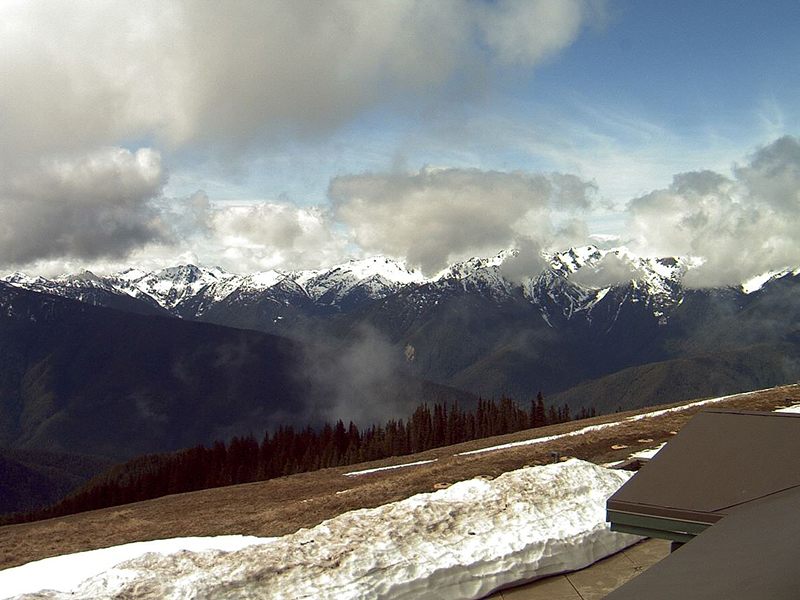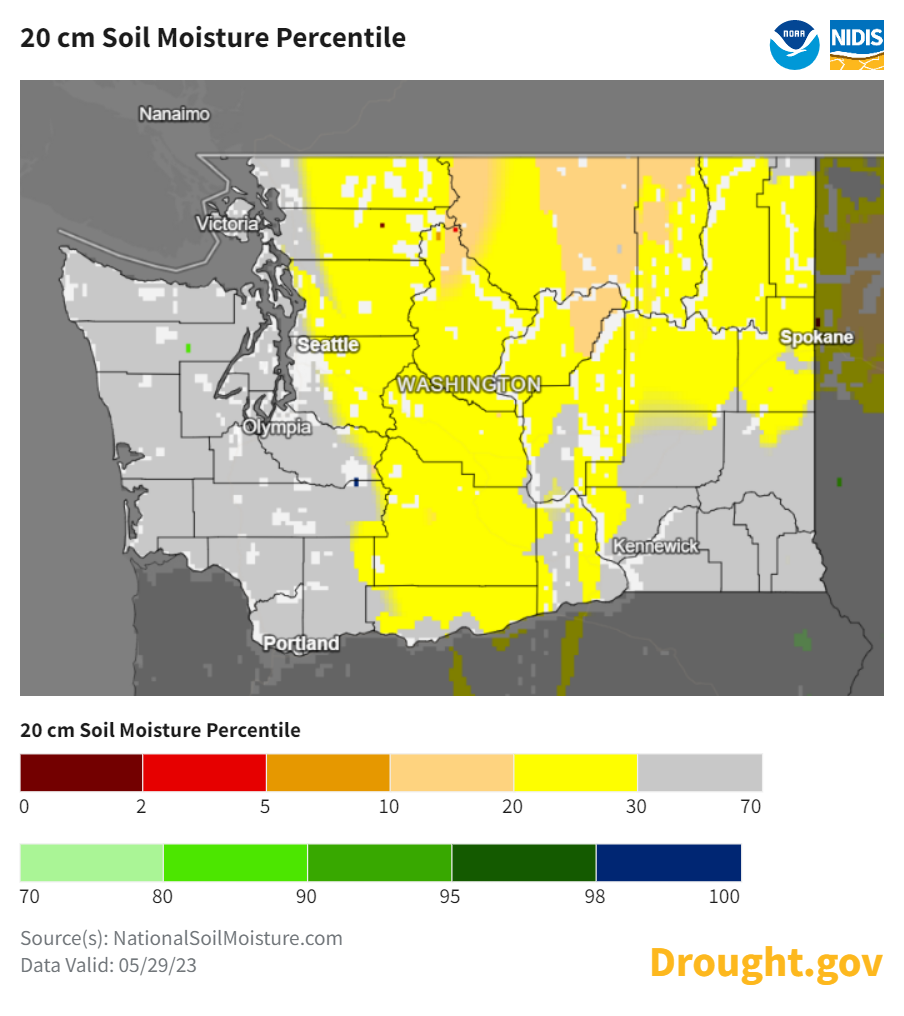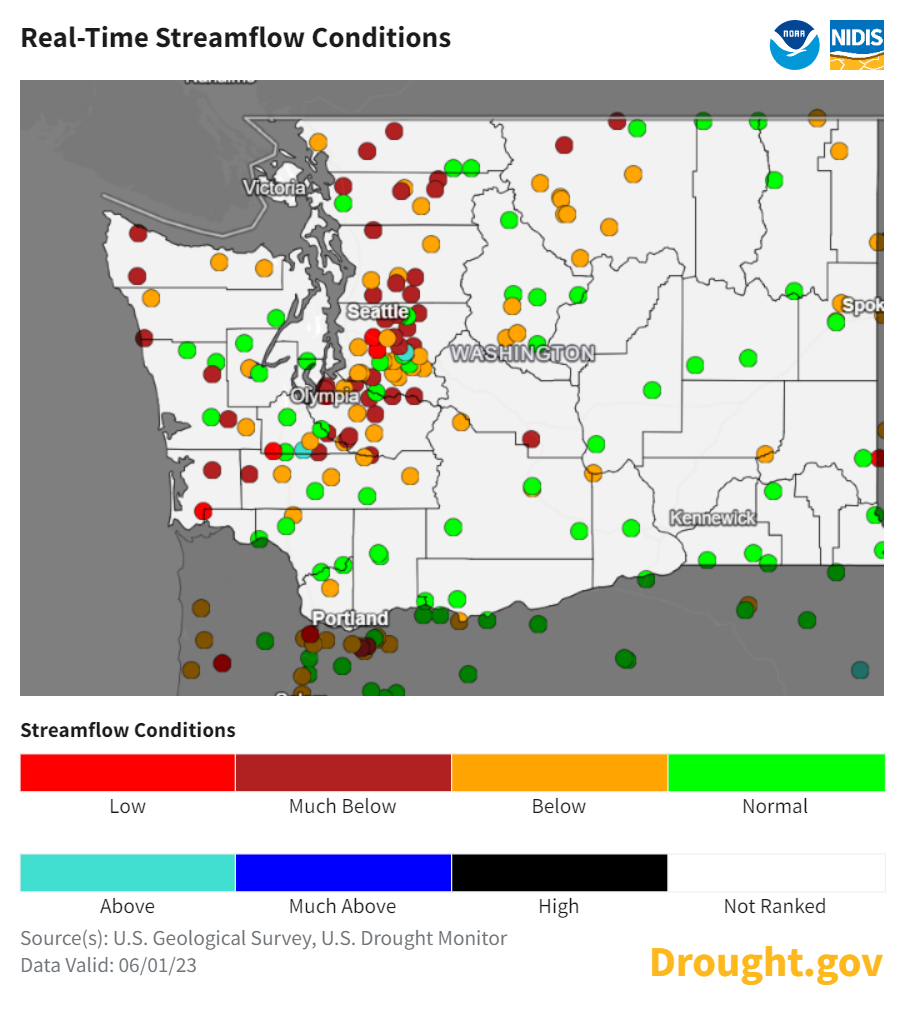
This photo, taken by National Parks Service webcam, shows Hurricane Ridge at Olympic National Park on May 7. Just ten days prior to this, the same webcam showed the mountains covered in snow.
It’s been a rollercoaster of a year so far for the state's water supply. A dry winter had us worried about snowpack until an unseasonably cold spring left the state with a surplus. Average statewide temperatures October through April were below normal, ranking as 48th coldest in the state’s recorded history. Just when we were ready to breathe a sigh of frost-breathed relief, a sudden heat wave in May caused an early snowmelt. Snow-fed rivers are raging now, but the forecast is not optimistic.
Snowpack in Washington peaked on April 23, about two weeks later than usual, at 111% of normal snow water equivalent statewide. The snowpack has gone downhill ever since, as rapidly warming temperatures brought on a strong snowmelt. In 18 days (May 1-18), 34,445,826 acre feet of water stored in the snow melted down to 17,376,564, a loss of almost half the snowpack in state watersheds. Many SNOTEL stations — which measure snowpack — experienced record rates of snowmelt in May.
Where did all of that water go?
Snow-fed rivers have been running strong throughout May. Forecasters at the National Weather Service predict that May runoff for many rivers will be as high as 182% of normal. Half of the monitored locations in the state are likely to exceed 125% of normal. Unfortunately, the early snow melt, coupled with low precipitation forecasts, means there will be less water to meet both instream and out-of-stream needs over the summer.
In June, there will be dramatically reduced flows statewide, with the Naches and Upper Yakima watersheds especially hit hard. By July, streamflows in parts of the Naches Watershed are projected to be as low as 41% of normal. In the Upper Yakima, July streamflows are expected to get as low as 37% of normal and continue dipping as summer progresses. Conditions for fish in upper basin tributaries are likely to be challenging. Low flows can cause migration barriers and make water temperatures stressful for fish. On the bright side, water storage in the Yakima Basin is expected to be full enough to avert major hardship to irrigators.
The Spokane River basins are also experiencing low flows. The Spokane River and Hangman Creek are already flowing at half of normal. Calls from concerned residents are coming in for basins without stream gages, reporting dried-up springs and water levels in creeks that look more like July or August than the end of May. The Little Spokane River is dropping quickly and roughly 160 water right holders are likely to be asked to stop using surface water in June.
July streamflows are also projected to be low for the Okanagan, Nooksack, and Entiat watersheds. Junior water right holders in these basins are likely to be asked to restrict their diversions.
What can you do?
As conditions unfold, it’s important to hear how conditions are affecting you or whether you are noticing changes in the landscape. Consider submitting a report to the Drought Conditions Monitoring and Observations Reporting tool, or let us know directly by sending an email to jeff.marti@ecy.wa.gov.
Keep up with current water supply information by visiting our statewide conditions page and our water supply monitoring page. The National Integrated Drought Information System recently launched new state-specific drought pages.



